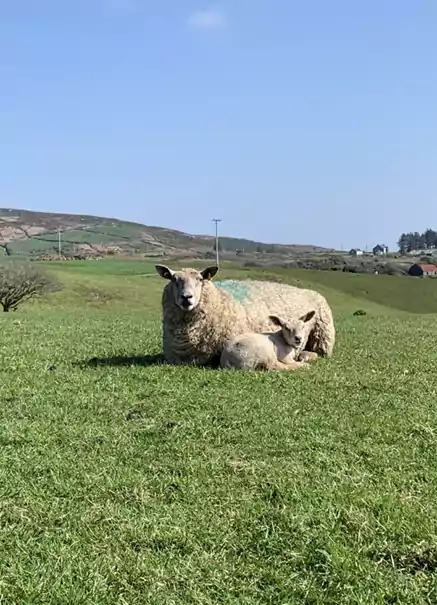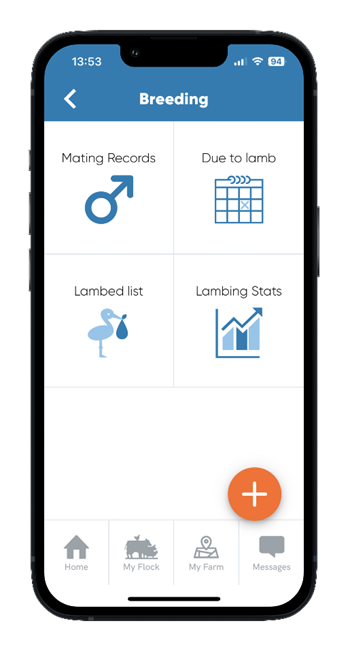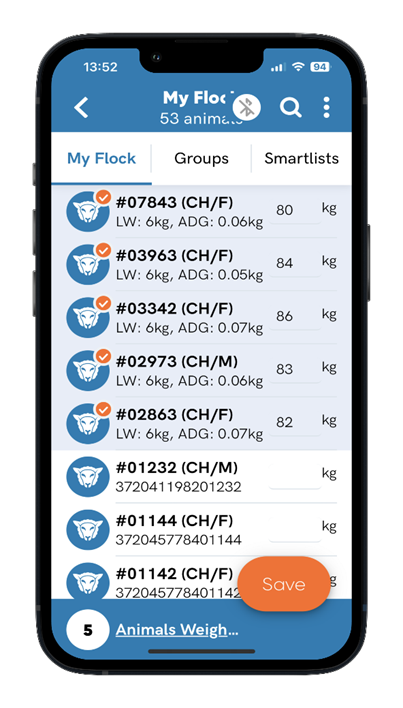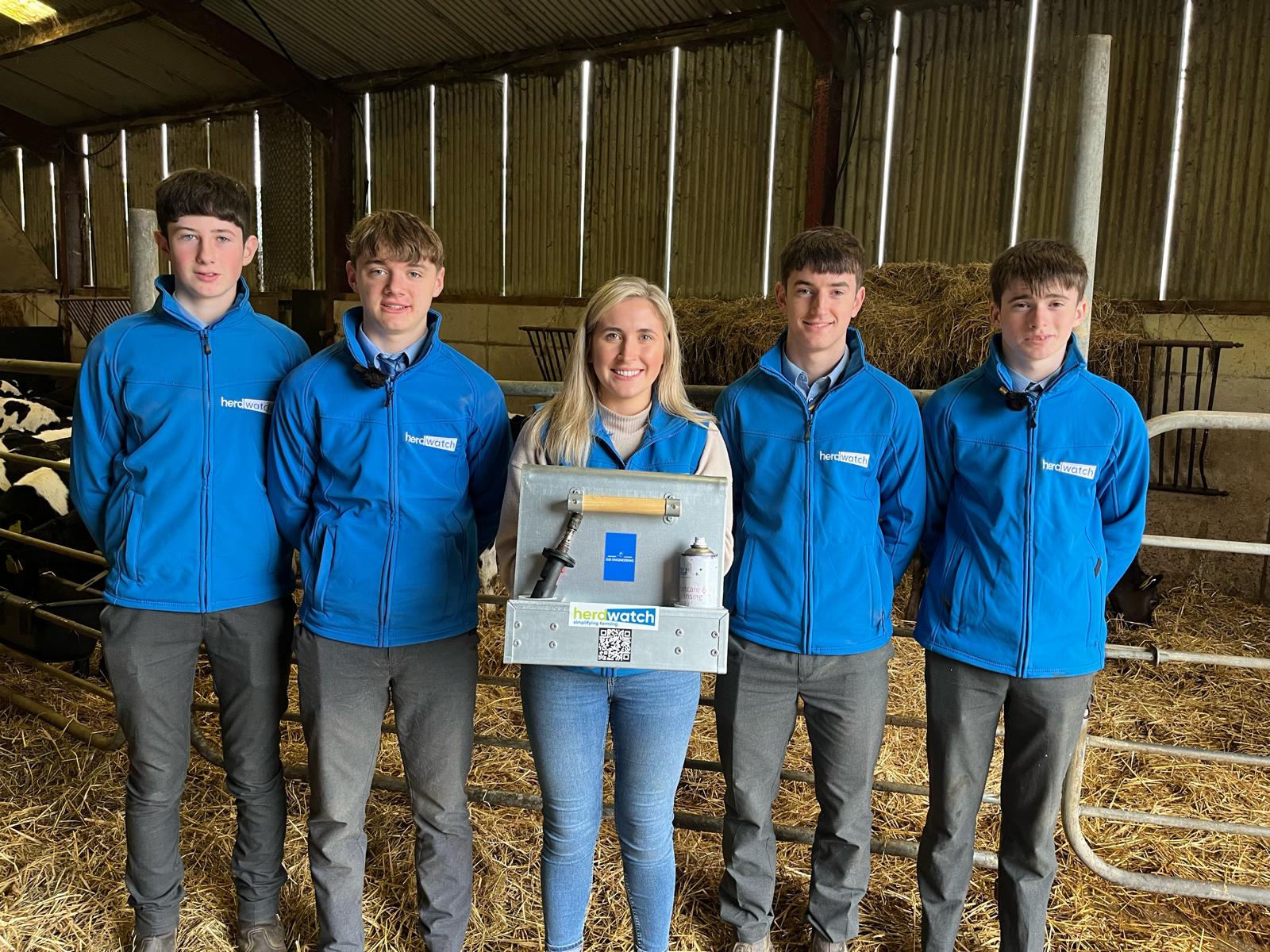5 Tips to Maximise Post Lambing Recovery in Ewes

As lambing is drawing to a close, it is important to note key performance tips to ensure your ewes thrive post lambing producing strong and healthy offspring. Ewes need special care and attention after lambing to make sure they are healthy and able to recover from the strain of giving birth.
In this article we focus on Nutrition as one of the most important factors in post-lambing recovery. If optimum nutrition is achieved pre and post lambing, ewes respond better and produce strong and healthy lambs.
Farmers are eager to get sheep outdoors after lambing to reduce the risk of disease amongst lambs and get ewes eating in fresh pastures, however, this is not without it issues.
The quality and quantity of grass available to the flock determines how much feed ewes receive outside. Ewes with healthy bodies at lambing have the capacity to lose condition without impairing their capacity to provide milk. However, it is essential that ewes are given the food they need for up to 4 weeks following lambing because this is when their milk production is at its highest. Ewes rearing twin lambs will need supplementation where grass height is less than 4 cm. The quantity and calibre of grass available will determine the level of supplementing. If feeding is necessary, troughs should be shifted often to prevent lambs from gathering in muddy and wet areas. Below are five suggestions for ensuring the best nourishment for sheep after lambing and methods to promote a ewe’s ability to raise their lambs.

- Offer nutrient-dense forage.
For ewes to recuperate from lambing, a lot of high-quality feed is required. It’s critical to give animals access to recent, high-quality fodder, such as hay, silage, or pasture. Make sure the forage is clean and mould-free because rotting hay or silage might have negative effects on one’s health.
- Add more energy.
Ewes who are lactating need more energy to provide milk for their lambs. Offer them a premium concentration feed to make sure they have adequate energy. At least 16% protein and 3.5% fat should be present in the concentrate. Ideally, Ewes rearing twins in good body condition on quality (70DMD) silage will require 1.2kg of 18% crude protein ration. This should be fed for up to four weeks. As the ewe has reached peaked lactation at this stage ration quantity can be reduced gradually.
- Ensure access to water.
Ewes that are rearing lambs need water to survive. Ensure they always have access to fresh, clean water. A sheep that is lactating has to consume at least twice as much water as a ewe that is not lactating.
- Track your body’s condition score.
Following lambing, it’s critical to keep an eye on a ewe’s body condition score (BCS). The ideal BCS for a lactating ewe is 3-3.5. A ewe’s milk production and general health may suffer if her BCS is less than 2.5.
- Think about dietary supplements.
A ewe may benefit from nutritional supplements if she is having trouble keeping weight on or is displaying symptoms of poor health after lambing. Consult your veterinarian for advice on the finest vitamins to give your ewes.
It is essential for the health of the ewe and her offspring to ensure appropriate ewe nutrition after lambing. You may aid your ewes in recovering quickly by giving them high-quality food, extra energy, lots of water, checking body condition score, and taking nutritional supplements into consideration.
So how can Flockwatch help you?
During lambing season, Flockwatch can be particularly useful in helping farmers track and manage the health and productivity of their flock. Here are a few ways in which Flockwatch can help farmers during and after lambing season.
in helping farmers track and manage the health and productivity of their flock. Here are a few ways in which Flockwatch can help farmers during and after lambing season.
1. Flockwatch gives the farmer access to breeding data in relation to mating records and ewes due to lamb, optimising time management and ensuring the ewes are cared for accordingly throughout their gestation period right up to the day they’re due to lamb.
2. Flockwatch can help farmers keep detailed records of their flock’s performance, including lambing data, medical treatments, and breeding history. The ease of access reduces the amount of time spent doing paperwork and allows for more time efficient farming practices.
Flockwatch can help farmers keep track of the health and well-being of their ewes and lambs. By providing the tools to monitor factors such as weight, breeding and performance records, farmers can quickly identify any potential health issues and take action to address them, such as culling.
If you’re a farmer looking to optimize your flock’s performance and improve your operations during and after lambing season, consider joining Flockwatch today.
You can join over 18000 farmers benefiting from the App by downloading now! Why Wait? Get in touch with a member of our team and start monitoring and optimising your flock’s productivity.





